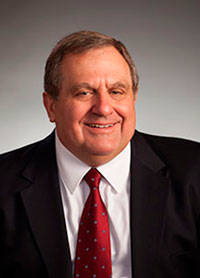Our environmental quality strategy must be encompassing and not just focus on climate change.
Since Democrats announced their Green New Deal, the emphasis is reducing greenhouse gases, particularly CO2, which contribute to global warming. Their goal is to replace gasoline and diesel burning vehicles with those operated by batteries and to eliminate coal and natural gas burning power plants.
It is understandable since the largest source of greenhouse gas emissions from human activities is from burning fossil fuels for electricity, heat, and transportation, according to EPA. By comparison, the world’s largest CO2 producer is China (23 percent). It emits twice the amount of the USA.
Under the Green New Deal, America would become 100 percent reliant on renewable electricity by 2030. Democrat presidential nominee Joe Biden wants to spend $2 trillion to make the conversion by 2035.
While reducing greenhouse gases is vital, we cannot ignore the fact that in 2019, about 63 percent of our nation’s electricity was generated from coal, natural gas and petroleum. Combined hydropower, biomass, geothermal, wind and solar provided 22 percent.
Lithium-ion batteries will run more electric vehicles in the next decade and wind and solar power will be augmented by large storage new batteries to electrify the grind during the night and slack winds.
Batteries also come with environmental challenges. There is significant water pollution caused from extracting and processing copper, lithium, nickel and cobalt ore—which are also the primary elements used in batteries for cellphone and laptops.
Demand for copper is soaring as electric cars replace internal combustion engines. The average electric vehicle requires three times to amount of copper (165 lbs.) and there is an estimated 6,600 to 7,700 lbs. in the wind turbines we see in central Washington.
Copper mining creates open pit and deep shafts—many of which are abandoned. Smelting produces air toxics and acid heavy-metal laden water. Wastes are often dumped in slag piles.
Lithium requires vast volumes of water to inject into the ground only to emerge contaminated. Wired.com reports Chilean farmers and local residents are already trucking in water. Mining activities in Salar de Atacama, the largest salt flat in Chile and rich in lithium, consumes 65 percent of the region’s water.
In Tagong, a Chinese city on the eastern edge of the Tibetan plateau, water has been contaminated by lithium mining operations owned by BYD, the world’s largest supplier of lithium-ion batteries and Chinese automaker which made 10,000 electrics (more than Tesla) in 2017.
As lithium-ion batteries reach the end of their useful life, disposal becomes a giant headache. The average lifespan of a lithium-iron phosphate (LFP) battery, the dominant type in China’s electric vehicles, is around five years.
According to Quartz in 2020, nearly 250,000 metric tons (276,000 tons) of batteries are set to be retired—nearly 20 times those depleted in 2016. But recycling these batteries isn’t easy due to the sophisticated chemical procedures involved. If it’s not done properly the heavy metal contained in the battery can lead to contamination of soil and water in landfills.
The point is our environmental strategies must be more encompassing. Hopefully, as companies consider new climate strategies investments, they can broaden their focus.
For example in announcing its Climate Pledge Fund, Amazon will be investing in recycling and water quality projects as well as transportation, energy generation, battery storage, manufacturing and food and agriculture.
Amazon plans to buy all of its electricity from renewable sources and purchase 11,000 electric vehicles. Hopefully, it can invest in battery recycling technology as well so all of the metals in lithium-ion batteries can be recovered and reprocessed — not tossed in landfills.
DON BRUNELL, retired as president of the Association of Washington Business, is a business analyst, writer, and columnist. He lives in Vancouver and can be contacted at TheBrunells@ msn.com.


